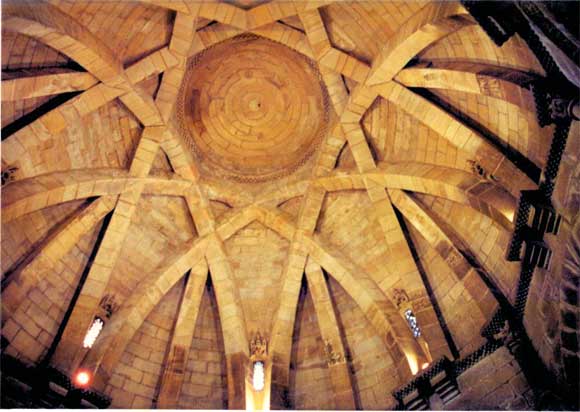Amelia PARRADO MÁRQUEZ
Perfil en Academia.edu
La influencia de al-Andalus en el arte cristiano español: las bóvedas en la arquitectura religiosa y civil de los siglos XI al XVI
Resumen
A pesar del papel fundamental que juegan los abovedamientos en la construcción de un edificio, sólo se les ha prestado una relativa atención, probablemente porque se han considerado más importantes otros aspectos como sus plantas o porque han llamado la atención de los investigadores otros elementos más “visuales” como la ornamentación (pintura, escultura, decoración, etc.). Una de las consecuencias de esta relativa falta de atención es la frecuente mención del cerramiento del edificio como “abovedado” sin especificar la tipología de las bóvedas.
Por otro lado, en la actualidad no existen estudios de conjunto sobre la influencia de la arquitectura andalusí, más concretamente de sus bóvedas, en las construcciones religiosas y civiles de los siglos XI al XVI.
De esto modo, estudiar el sistema de abovedamientos del periodo referido, desde su punto de vista formal, se convierte en el objetivo principal de esta investigación, sin perder de vista que las bóvedas forman parte de un sistema estructural que se integra y define la construcción del edificio.
Este trabajo pretende llenar el vacío existente realizando una compilación de los mencionados sistemas de abovedamiento, haciendo una revisión de los análisis comparativos, tipológicos, estilísticos y las dataciones existentes, para posteriormente analizar los orígenes, variantes y repercusiones de los distintos modelos de abovedamiento andalusíes en la arquitectura cristiana desde el siglo XI al XVI.
The influence of al-Andalus on Christian Spanish art: the vaults in religious and civil architecture of the 10th to 16th centuries
Abstract
Despite the fundamental role of vaults in the construction of a building, it has only been given a relative attention, probably because other aspects such as plants have been considered more important, or because it’s drawn the attention of the researchers on other elements more "visual" as ornamentation (painting, sculpture, decoration, etc.). One consequence of this relative lack of attention is the frequent mention of the building as "vaulted" without specifying the type of vaults.
On the other hand, nowadays there are no comprehensive studies of the influence of Andalusian architecture, particularly its vaults, on religious and civil buildings of the eleventh to sixteenth centuries.
In this way, studying the system of vaulting of the period referred from the formal point of view becomes the main objective of this research, without losing sight of the vaults as part of a structural system that integrates and defines the construction of the building.
This work aims to fill the gap by performing a compilation of the mentioned vaulting systems, by reviewing the comparative, typological, stylistic and dating analysis, and subsequently analyzing the origins, variations and implications of the various models of Andalusian vaulting in Christian architecture from the eleventh to the sixteenth century.

